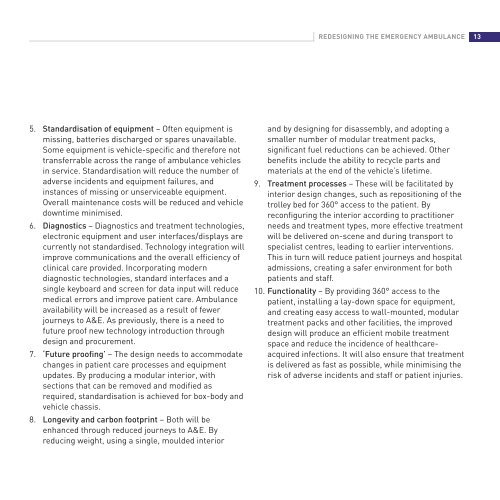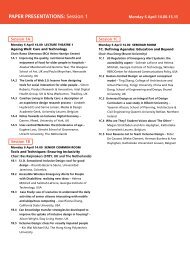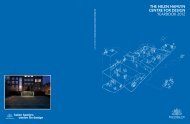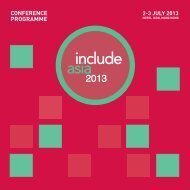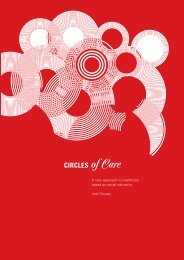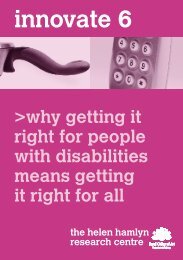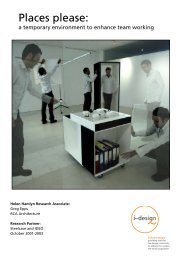Redesigning the Emergency Ambulance - Helen Hamlyn Centre ...
Redesigning the Emergency Ambulance - Helen Hamlyn Centre ...
Redesigning the Emergency Ambulance - Helen Hamlyn Centre ...
- No tags were found...
You also want an ePaper? Increase the reach of your titles
YUMPU automatically turns print PDFs into web optimized ePapers that Google loves.
REDESIGNING THE EMERGENCY AMBULANCE 13<br />
5. Standardisation of equipment – Often equipment is<br />
missing, batteries discharged or spares unavailable.<br />
Some equipment is vehicle-specific and <strong>the</strong>refore not<br />
transferrable across <strong>the</strong> range of ambulance vehicles<br />
in service. Standardisation will reduce <strong>the</strong> number of<br />
adverse incidents and equipment failures, and<br />
instances of missing or unserviceable equipment.<br />
Overall maintenance costs will be reduced and vehicle<br />
downtime minimised.<br />
6. Diagnostics – Diagnostics and treatment technologies,<br />
electronic equipment and user interfaces/displays are<br />
currently not standardised. Technology integration will<br />
improve communications and <strong>the</strong> overall efficiency of<br />
clinical care provided. Incorporating modern<br />
diagnostic technologies, standard interfaces and a<br />
single keyboard and screen for data input will reduce<br />
medical errors and improve patient care. <strong>Ambulance</strong><br />
availability will be increased as a result of fewer<br />
journeys to A&E. As previously, <strong>the</strong>re is a need to<br />
future proof new technology introduction through<br />
design and procurement.<br />
7. ‘Future proofing’ – The design needs to accommodate<br />
changes in patient care processes and equipment<br />
updates. By producing a modular interior, with<br />
sections that can be removed and modified as<br />
required, standardisation is achieved for box-body and<br />
vehicle chassis.<br />
8. Longevity and carbon footprint – Both will be<br />
enhanced through reduced journeys to A&E. By<br />
reducing weight, using a single, moulded interior<br />
and by designing for disassembly, and adopting a<br />
smaller number of modular treatment packs,<br />
significant fuel reductions can be achieved. O<strong>the</strong>r<br />
benefits include <strong>the</strong> ability to recycle parts and<br />
materials at <strong>the</strong> end of <strong>the</strong> vehicle’s lifetime.<br />
9. Treatment processes – These will be facilitated by<br />
interior design changes, such as repositioning of <strong>the</strong><br />
trolley bed for 360° access to <strong>the</strong> patient. By<br />
reconfiguring <strong>the</strong> interior according to practitioner<br />
needs and treatment types, more effective treatment<br />
will be delivered on-scene and during transport to<br />
specialist centres, leading to earlier interventions.<br />
This in turn will reduce patient journeys and hospital<br />
admissions, creating a safer environment for both<br />
patients and staff.<br />
10. Functionality – By providing 360° access to <strong>the</strong><br />
patient, installing a lay-down space for equipment,<br />
and creating easy access to wall-mounted, modular<br />
treatment packs and o<strong>the</strong>r facilities, <strong>the</strong> improved<br />
design will produce an efficient mobile treatment<br />
space and reduce <strong>the</strong> incidence of healthcareacquired<br />
infections. It will also ensure that treatment<br />
is delivered as fast as possible, while minimising <strong>the</strong><br />
risk of adverse incidents and staff or patient injuries.


